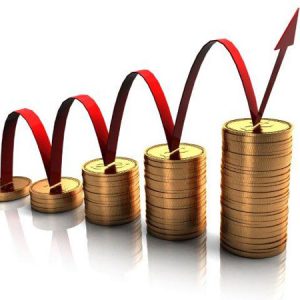
According to the latest Moneyfacts figures, on a first of month basis, the last time average two-year fixed rates were higher than this was in August 2008 when the average two-year fix was 6.94 per cent.
The report continued that the average five-year fixed residential mortgage rate today is 6.17 per cent. This has risen from an average rate of 6.13 per cent on the previous working day.
Moneyfacts added that there are 4,344 residential mortgage products available on the market, which is down from 4,631 on the previous working day.
Moneyfacts continued that the average two-year buy-to-let residential mortgage rate is 6.83 per cent. This is up from an average rate of 6.81 per cent on the previous working day.
The average five-year buy-to-let residential mortgage rate is 6.62 per cent. This is an increase from 6.60 per cent on the previous working day.
There are currently 2,253 buy-to-let mortgage products on the market, an increase from 2,252 on the previous working day.
Moneyfacts said that the average two-year tracker rate is 5.97 per cent, which is in line with yesterday’s figures.
The average standard variable rate is 7.67 per cent.
High mortgage rates will ‘create sleepless nights’ for homeowners
Jamie Lennox, director at Dimora Mortgages, said that with average rates reaching this level it “will no doubt create many sleepless nights for homeowners across the country that are having to face the prospect of needing to remortgage soon”.
“The real concern is each day the outlook worsens and there is no light at the end of the tunnel in sight. The sad reality is not even the mortgage charter will save many from the inevitability of losing their home later down the line and real question marks remain over whether enough has been done,” he added.
Gary Boakes, director at Verve Financial, said that this would have a “real impact on individuals and families over the next two years”.
“I have already had clients talking about using the six months interest-only option when their rates increase.
“The difficulty is this is exactly what the government wants as this will stop people spending so much on their lifestyle, and while I agree the ultimate goal is to lower inflation it just doesn’t sit right with me that people may lose their homes to do it. Having had a 6.2 per cent rate personally in 2008, I know it is going to be a hard slog for many families,” he noted.
Lewis Shaw, founder and mortgage expert at Shaw Financial Services, said: “In many cases, we’re seeing mortgage payments increase by an average of 50 per cent, where people are exiting rates of two per cent and below.
“We’ll likely see an increase in forced sales as people look to downsize. However, the problem then arises that a flood of property coming to the market while buyer demand slumps can only lead to house prices reducing.”
He added: “If anyone is in the position of thinking they’ll need to sell, the best piece of advice is ‘do not chase the market down’. If you feel you must sell, price under your local market, get competing bids and take a fair offer. The boat is about to leave; unless people act quickly, they may miss it.”
Adam Smith, founder at Alfa Mortgages, said: “The only thing that looks certain is that rates will rise. Buckle up, because it’s going to be one hell of a ride.”















